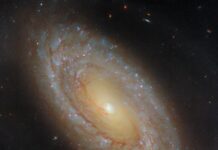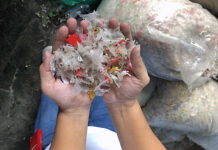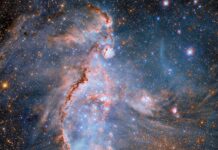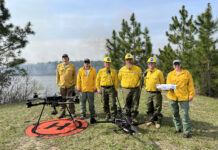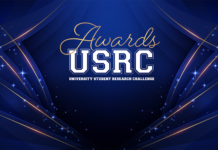Exploring the Martian Surface: Curiosity Rover’s Recent Endeavors
In the ever-evolving landscape of space exploration, NASA’s Curiosity Rover continues to make significant strides on the Martian surface. This article delves into the recent activities of the rover from Sols 4495 to 4497, highlighting its scientific endeavors and the challenges it faces.
Unfolding the Martian Terrain
The Curiosity Rover, a marvel of modern engineering, has been tirelessly traversing Mars to uncover its secrets. Recently, it captured a compelling image using its Chemistry & Camera (ChemCam) Remote Micro-Imager (RMI). This instrument is crucial for the rover’s mission, as it analyzes the chemical composition of Martian rocks and soil. By deploying a laser to vaporize materials, it provides a detailed elemental analysis using an on-board spectrograph. The captured image showcases intriguing “boxwork” structures to the west, offering scientists a glimpse into the geological processes at play on Mars.
Balancing Act: Navigating Martian Challenges
Despite the exciting discoveries, the Curiosity Rover faces its share of challenges. A recent Slip Risk Assessment Process (SRAP) issue arose due to the rover’s wheels being precariously perched on massive layered sulfate rocks. This situation underscores the complexities of navigating the Martian terrain, where each movement requires careful consideration to avoid mishaps. With winter power constraints adding another layer of difficulty, the rover’s team has meticulously planned its activities to maximize efficiency.
Scientific Endeavors: A Weekend of Exploration
The mission’s recent itinerary was packed with scientific activities aimed at enhancing our understanding of Mars. The rover’s Sample Analysis at Mars (SAM) instrument engaged in an exercise with Oven 2, a task completed successfully. The Navigation Camera (Navcam) was also put to work, capturing a 360-degree “phase function” sky movie to monitor the scattering of Martian clouds. Moreover, the Alpha Particle X-ray Spectrometer (APXS) conducted atmospheric measurements of argon, and the ChemCam focused on passive sky measurements of oxygen.
In addition to these tasks, the Curiosity Rover embarked on a 50-meter drive to the southwest, further expanding the scope of its exploration. This drive is not just a physical journey but a step closer to unraveling the mysteries of Mars.
Unveiling the Geological Marvels
The Martian landscape is a treasure trove of geological wonders, and the Curiosity Rover is at the forefront of this exploration. The rocks in the layered sulfate unit present a fascinating study. Characterized by ripples, layers, fractures, and sandy troughs, they pose intriguing questions about the past and present processes that shaped this region. The mission’s current focus is on gathering 70 images to unravel these mysteries, with the ChemCam analyzing the chemistry of the area’s lowest block.
To conserve power, the team has ingeniously synchronized the rover’s activities. For instance, while the Mast Camera (Mastcam) captures images, the ChemCam undergoes “TEC Cooling,” a process that ensures optimal cold conditions before the laser is used. Such strategic planning highlights the innovative approaches employed by the mission team to maximize scientific output.
Looking Ahead: The Rover’s Journey Continues
As the Curiosity Rover continues its mission, there is hope that its robotic arm can soon resume its activities. The arm, a vital component of the rover, plays a crucial role in conducting experiments and gathering samples. Its anticipated return will undoubtedly enhance the mission’s capabilities, allowing for more comprehensive exploration and data collection.
In the broader context of space exploration, the Curiosity Rover’s mission is a testament to human ingenuity and determination. It represents a significant step toward unraveling the mysteries of Mars and, by extension, our solar system. Each discovery made by the rover brings us closer to understanding the Red Planet’s history, geology, and potential for harboring life.
A Glimpse into the Future
The Curiosity Rover’s mission is part of a larger endeavor to explore Mars and beyond. NASA’s Mars Exploration Program is a comprehensive effort to investigate the planet’s climate, surface, and potential habitability. With missions like the Mars Perseverance Rover and the Mars Sample Return, the program aims to deepen our understanding of Mars and prepare for future human exploration.
As we look to the future, the insights gained from the Curiosity Rover will inform and inspire the next generation of explorers. The data collected will not only enhance our knowledge of Mars but also contribute to the broader field of planetary science. By studying Mars, we gain insights into the processes that shape planetary environments, offering clues about Earth’s past and future.
Conclusion: A Journey of Discovery
In conclusion, the Curiosity Rover’s recent activities on Mars underscore the dynamic nature of space exploration. From navigating challenging terrains to conducting groundbreaking scientific research, the rover continues to push the boundaries of what is possible. Its mission is not just about exploring a distant planet; it is about expanding our horizons, fostering curiosity, and inspiring future generations to reach for the stars.
For those interested in delving deeper into the Curiosity Rover’s mission and its findings, NASA provides a wealth of resources, including images, videos, and mission updates. These materials offer a window into the exciting world of Martian exploration, inviting us all to become part of this extraordinary journey.
For more information and updates on the Curiosity Rover and other Mars missions, visit the official NASA website at [NASA’s Mars Exploration Program](https://science.nasa.gov/mission/msl-curiosity/).
For more Information, Refer to this article.



















![Samsung’s Breakthrough Fuels Progress in Science and Industry: Interview How Samsung’s Engineering Feat Became a Catalyst for Scientific and Industry Advancement [Interview on Real Quantum Dots Part 2.]](https://www.hawkdive.com/media/samsung-tvs-and-displays-samsung-quantum-dots-technology-qled-tvs-quantum-dots-experts-interview-par-218x150.jpeg)
